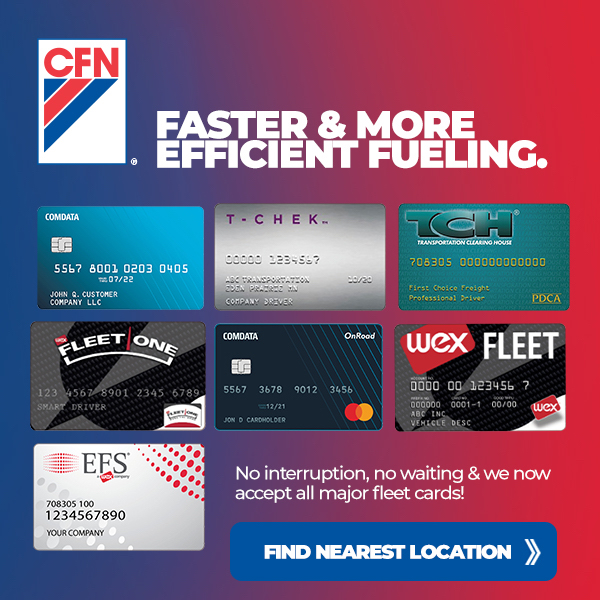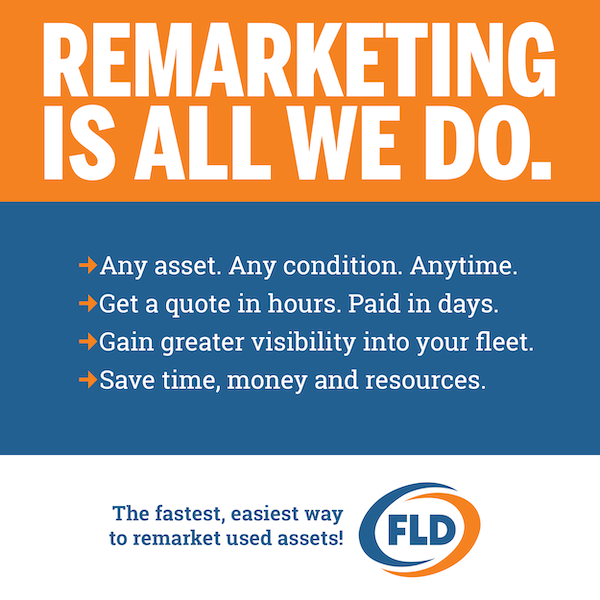
By FMW Staff
November 15, 2023
In an era marked by a growing commitment to sustainability and efficiency, fleet managers are constantly looking to make their operations more eco-friendly while also saving costs.
While electrification is one of the most popular sustainability initiatives among fleets, there are many other ways that fleets can achieve immediate sustainability gains. Telematics-based assessments, fuel management, and other digital tools are all powerful assets in meeting these goals.
 Navigating this constantly-evolving landscape is much easier when working with an expert collaborator. We recently had the privilege of sitting down with seasoned expert Jim Perkins, the Head of Fleet Solutions for Shell Oil Products, US. He spoke with Fleet Management Weekly about how Shell’s one-on-one consultations with fleet managers result in tailored solutions.
Navigating this constantly-evolving landscape is much easier when working with an expert collaborator. We recently had the privilege of sitting down with seasoned expert Jim Perkins, the Head of Fleet Solutions for Shell Oil Products, US. He spoke with Fleet Management Weekly about how Shell’s one-on-one consultations with fleet managers result in tailored solutions.
What are some of the cost-conscious solutions that fleet managers can take today to save money?
There are different ways that fleet managers can begin their cost savings. Managing your fuel expenses is probably the first and foremost opportunity to lower expenses. Having a collaborator like a Shell key account manager helping to guide and expert support ensures a powerful collaboration.
 Other opportunities are uncovered by leveraging our reporting tools, like our ClearView program, which lays out great data for you to make sound decisions on.
Other opportunities are uncovered by leveraging our reporting tools, like our ClearView program, which lays out great data for you to make sound decisions on.
We don’t just hand a customer the program. Our key account managers counsel the customer, helping to identify specific opportunities. Together, we get deeper into the portfolio, leveraging telematics data and sustainability data and reporting.
Other than EVs, what are some of the ways that fleets can go green?
Electric vehicles are the future, but fleet owners are looking for how to be more sustainable today. Again, it goes back to having a partner, somebody that can guide you through a plan or at least point you in the direction of the best opportunities.
Our key account managers deal with many customers every day, so they have best practices within industries. They can talk about what they see with other businesses and how to become more sustainable.
One way is with fuel card data. The data can help a customer identify unnecessary purchases and reduce fuel consumption. Sometimes a customer will even identify inefficient purchasing of fuel. This, too, can reduce consumption.
 The other piece of the puzzle is telematics data, identifying driver behaviors that are wasteful and routes that aren’t optimized. Our customers can leverage that data today to start becoming greener and reduce emissions.
The other piece of the puzzle is telematics data, identifying driver behaviors that are wasteful and routes that aren’t optimized. Our customers can leverage that data today to start becoming greener and reduce emissions.
Finally, there’s the Shell mobile fuel delivery program, Shell TapUp. You can reduce unnecessary driving miles by having fuel delivered to your facility, fueled up overnight or whenever you want. Then, when the drivers are ready to go to work, their vehicles are ready to go as well.
Tell me about the Shell fleet consultants who provide one-on-one examinations and solutions. How does that work?
I’m really proud of the team of sales professionals I have within Shell. These people have a passion for helping people, as do I. That’s my favorite part of this job – going out and helping solve problems for our customers. And that’s what my key account managers do. Whether it’s a prospect or an existing customer, they are going to assess the customer or the prospect’s business and look for opportunities to help them.
They’ll focus on their pain points or challenges because that’s going to help that fleet, whether they’re trying to become more sustainable, find the right solution, or even how to leverage available data. Because a lot of our customers and prospects have all this data, but don’t have anybody talking to them about it.
 Our experts take the time to really help the customer understand the numbers and what they tell us about the best course of action. Then they will have periodic business reviews once they’re our customer. They’ll review their progress, set goals for the customers, and help them meet those goals.
Our experts take the time to really help the customer understand the numbers and what they tell us about the best course of action. Then they will have periodic business reviews once they’re our customer. They’ll review their progress, set goals for the customers, and help them meet those goals.
What are some of the digital tools that fleets can use to streamline and simplify their fleet management?
Shell Fleet Cardholders can use the Driver Dash app to help manage their card, find Shell stations, and pay for their fuel with improved speed and ease. Coupled with the ClearView platform, they can review fuel spend, find inefficiencies, and turn insights into action. For help with decarbonization, Shell has a robust library of tools designed to provide our customers with educational inputs on their unique sustainability goals.
Our Telematics EV suitability assessment is another great tool to start monitoring a customer’s existing vehicles to determine which ones are best to transition to electric-based on the routes they drive, the amount of idling they do, and the length of driving they do on a daily basis. All of our tools are best used in conjunction with the consultation of our Shell key account managers.
 The last digital tool that comes to mind is our green dashboard through telematics. This basically monitors fuel costs and how to decarbonize. Is a company achieving its goals that they have established to reduce expenses in those two areas? It also evaluates overall environmental performance, so it’s a really solid tool to provide an idea of where a company stands from that perspective.
The last digital tool that comes to mind is our green dashboard through telematics. This basically monitors fuel costs and how to decarbonize. Is a company achieving its goals that they have established to reduce expenses in those two areas? It also evaluates overall environmental performance, so it’s a really solid tool to provide an idea of where a company stands from that perspective.
Can you tell us about Accelerate to Zero and why fleet managers should know about it?
We’re really excited about this new program that we’ve implemented in the last couple months, called Accelerate to Zero. We talked to thousands of fleet managers and fleet owners around the country, and there was a surprising consistency in the need for help. They are looking for a partner to help them through this energy transition. In response, we developed Accelerate to Zero.
First, our key account managers, along with subject matter experts within Shell, meet with the customer to uncover where the opportunities are within a fleet. They’ll do an assessment, reviewing the types of vehicles, where in the country they’re located, what fuels are available, and so on. There’s an opportunity to diagnose where the existing fleet sits today, and then build a tailor-made fleet solution. It’s not a generic one-size-fits-all: it’s unique to each customer.
 The next step is to deploy the program along with the customer. We focus on EV depots – those facilities that have many vehicles. It’s an efficient use for the facilities and getting the vehicles charged up for the future. Then after we deploy it, we monitor it with them. We don’t walk away – we are going to help them realize the benefits of the program we put together, and we’ll help modify it as necessary as we go along. It is the beginning of a long-term partnership that Shell develops with each customer because we, too, want to help fleets solve the problems they face and realize their full savings potential.
The next step is to deploy the program along with the customer. We focus on EV depots – those facilities that have many vehicles. It’s an efficient use for the facilities and getting the vehicles charged up for the future. Then after we deploy it, we monitor it with them. We don’t walk away – we are going to help them realize the benefits of the program we put together, and we’ll help modify it as necessary as we go along. It is the beginning of a long-term partnership that Shell develops with each customer because we, too, want to help fleets solve the problems they face and realize their full savings potential.



